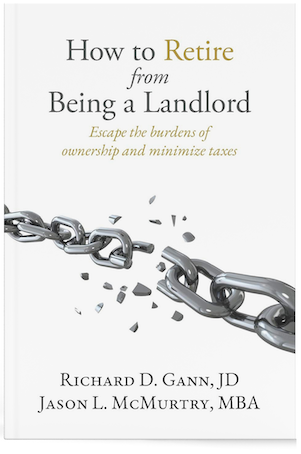
How Self-Storage Complements Multifamily
How Self-Storage Complements Multifamily
The self-storage and multifamily markets are often said to run along parallel paths. Both asset classes follow a similar set of metrics—namely population growth, employment growth, and income growth—to determine a profitable submarket. Self-storage and apartment rent growth are linked and vacancy rates for both trend in tandem.[1]
Both asset classes are considered to be somewhat recession-defensive, and because operators are able to respond quickly to changing market conditions with frequent rental rate changes, both property types are considered to be an inflation hedge option in commercial real estate.
Upon completing its $1.2 billion acquisition of Simply Self Storage in late 2020, the CEO of a major public REIT said that the transaction was “a complementary addition to [our] high-quality portfolio of income-generating real estate, which is heavily weighted towards logistics and multifamily primarily in growth markets.”[2] Or as Forrest Gump would say, apartments and storage are “like peas and carrots.”
Within the traded REIT industry, the self-storage sector has produced an annualized return of 16.54% since 1994, the highest return on average of all REIT sectors during that period and an over 6% higher return than the S&P 500.[3] And that performance includes several notable downturns, including the dot-com bubble and the Great Recession.
While self-storage has demonstrated a resilient business model, it is not immune to negative economic impacts. After years of development up through 2019, many markets became oversaturated with storage space, which led to a retraction in rental rates and higher vacancies. Whether isolated incidents of oversupply prove temporary, of course, depends on long-term demographic trends and economic conditions.
However, a number of pandemic-related dynamics have brought a resurgence in storage demand. The closure of offices and college campuses as well as other lockdowns prompted many households to place belongings in storage units as they turned spare rooms and garages into home classrooms, offices and gyms.
The untethering of numerous office workers accelerated the “Great Migration” trend that was already underway. As Millennials represent both the largest and most active share of self-storage renters, their lifestyle changes are especially relevant for self-storage and multifamily owners, alike.1 And, as older households opt to retire, downsize and buy that RV they’ve dreamed about, they often place their worldly possessions in storage.
All of these factors helped the five major publicly traded self-storage REITs in the market today achieve their growth in 2021. Revenues for all national self-storage REITs jumped more than 15%, net operating income (NOI) grew to almost 23%, and expenses decreased 2.3%.3
Many market participants have wondered if the changes that shored up demand are temporary, but thus far, storage space needs appear to be holding strong. Barriers to development, including elevated land, material and labor costs, continue to inhibit new storage (and multifamily!) construction, a trend likely to hold through the coming year that we believe will help keep supply and demand at a healthy balance.
For long-term investors, self-storage and multifamily may be complementary asset classes worth considering. For apartment owners interested in participating in the growing demand, but who are ready to retire from being a landlord, there are passive real estate investments that may allow investors an ability to move from an active to a passive role of real estate ownership on a tax-deferred basis.
For more information about passive real estate investments, please call 1031 Capital Solutions at 1-800-445-5908 or visit our website, 1031capitalsolutions.com.
Because investor situations and objectives vary this information is not intended to indicate suitability or a recommendation for any individual investor.
This is for informational purposes only, does not constitute as investment advice, and is not legal or tax advice. Because investors situations and objectives vary this information is not intended to indicate suitability for any particular investor. Please consult the appropriate professional regarding your individual circumstance.
The views of this material are those solely of the author and do not necessarily represent the views of their affiliates. Statements concerning financial market trends are based on current market conditions, which will fluctuate. Past performance is not a guarantee of future results.
There are material risks associated with investing in real estate securities including liquidity, tenant vacancies, general market conditions and competition, lack of operating history, interest rate risks, the risk of new supply coming to market and softening rental rates, general risks of owning/operating commercial and multifamily properties, short term leases associated with multi-family properties, financing risks, potential adverse tax consequences, general economic risks, development risks, long hold periods, and potential loss of the entire investment principal.
A REIT is a security that sells like a stock on the major exchanges and invests in real estate directly, either through properties or mortgages. REITs receive special tax considerations and typically offer investors high yields, as well as a highly liquid method of investing in real estate. There are risks associated with these types of investments and include but are not limited to the following: Typically, no secondary market exists for the security listed above. Potential difficulty discerning between routine interest payments and principal repayment. Redemption price of a REIT may be worth more or less than the original price paid. Value of the shares in the trust will fluctuate with the portfolio of underlying real estate. Involves risks such as refinancing in the real estate industry, interest rates, availability of mortgage funds, operating expenses, cost of insurance, lease terminations, potential economic and regulatory changes. This is neither an offer to sell nor a solicitation or an offer to buy the securities described herein. The offering is made only by the Prospectus.
The data contained in this material was obtained from third-party sources believed to be reliable; however, 1031 Capital Solutions, CIS, and CAM do not guarantee the accuracy of the information.
Securities offered through Concorde Investment Services, LLC (CIS), member FINRA/SIPC. Advisory services offered through Concorde Asset Management, LLC (CAM), an SEC-registered investment adviser. 1031 Capital Solutions is independent of CIS and CAM.
[1] Marcus & Millichap, 2022 US Self Storage Investment Forecast Report [2] Blackstone.com, October 26, 2020 [3] Fool.com, Why Self Storage is a Smart Buy for 2022, December 21, 2021_____________________
Securities offered through Concorde Investment Services, LLC (CIS), member FINRA/SIPC. Advisory services offered through Concorde Asset Management, LLC (CAM), an SEC registered investment adviser. Insurance products offered through Concorde Insurance Agency, Inc. (CIA) 1031 Capital Solutions is independent of CIS, CAM and CIA.
continue reading
Related Posts
Changes are Happening Quickly – Don’t be Left Behind […]
White House Seeks Higher Taxes from Landlords In a significant […]










